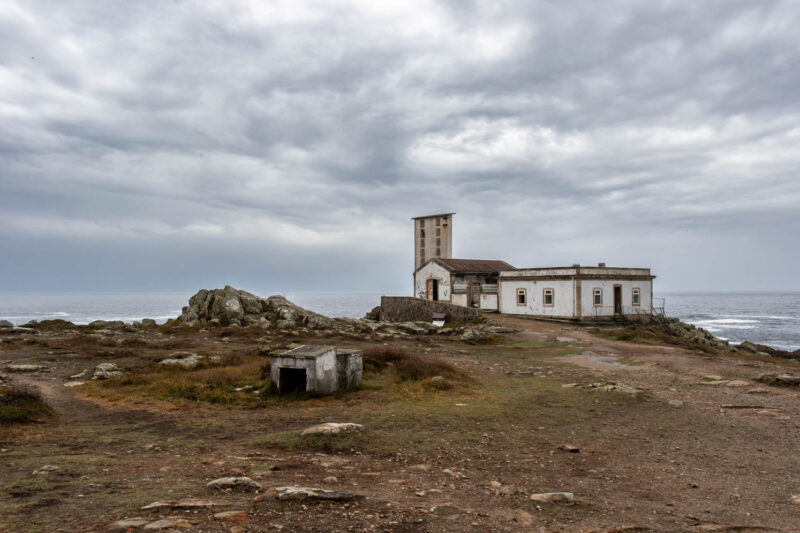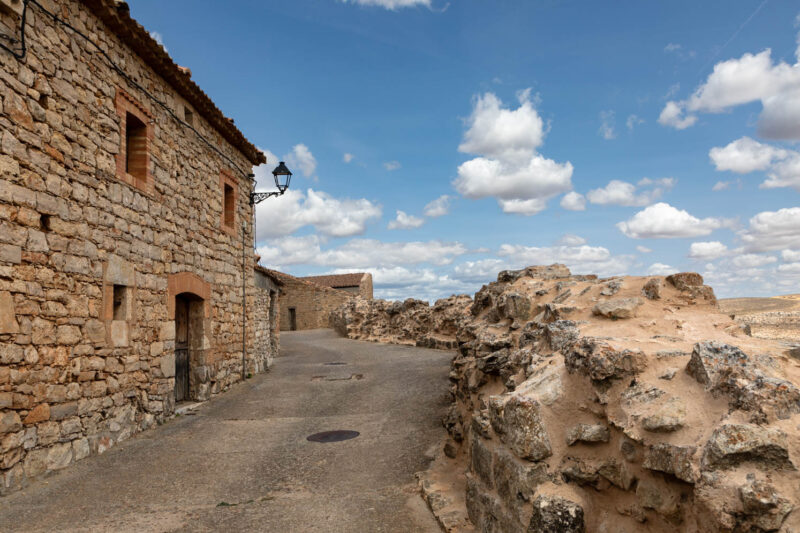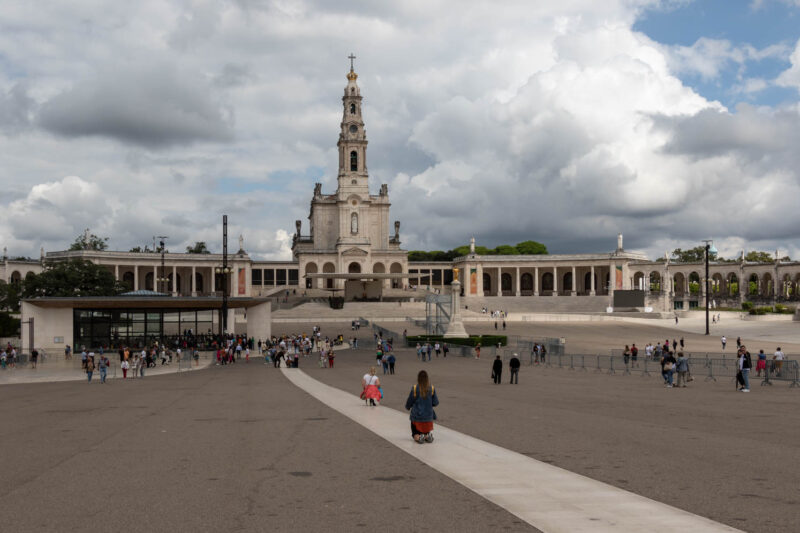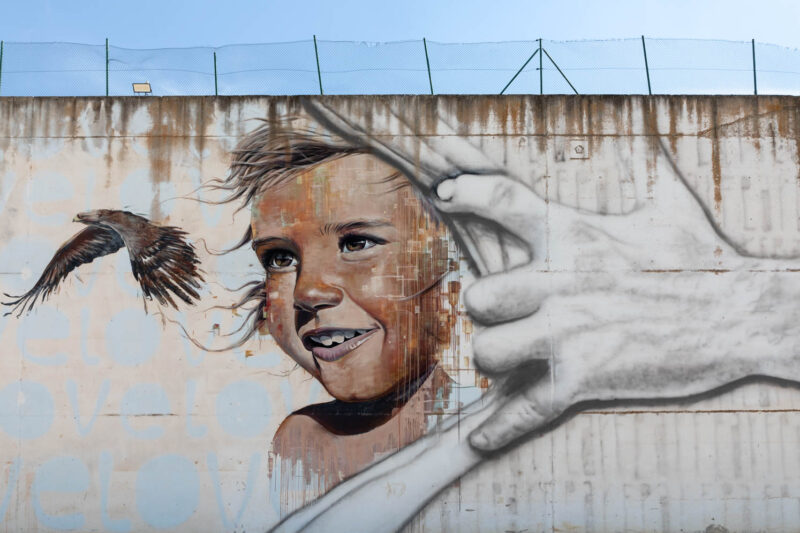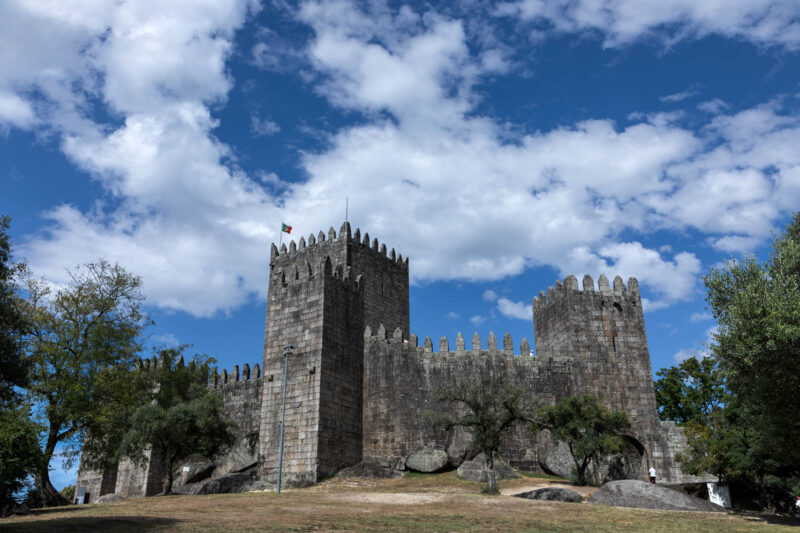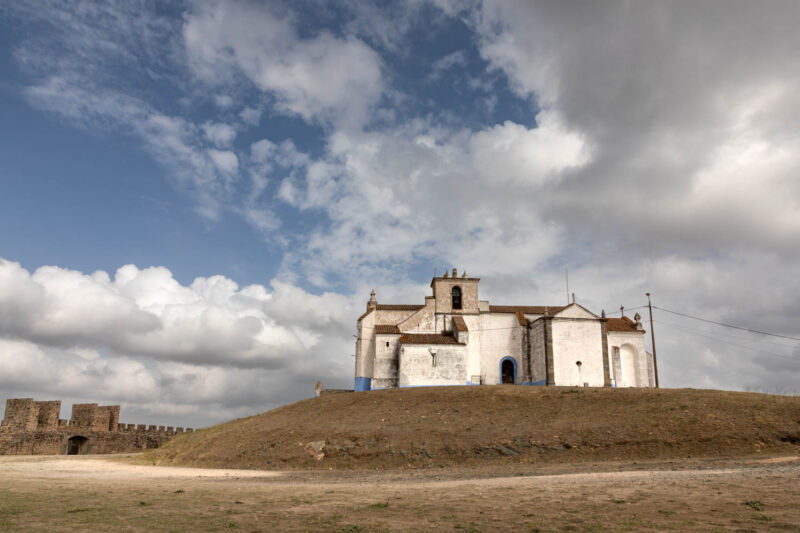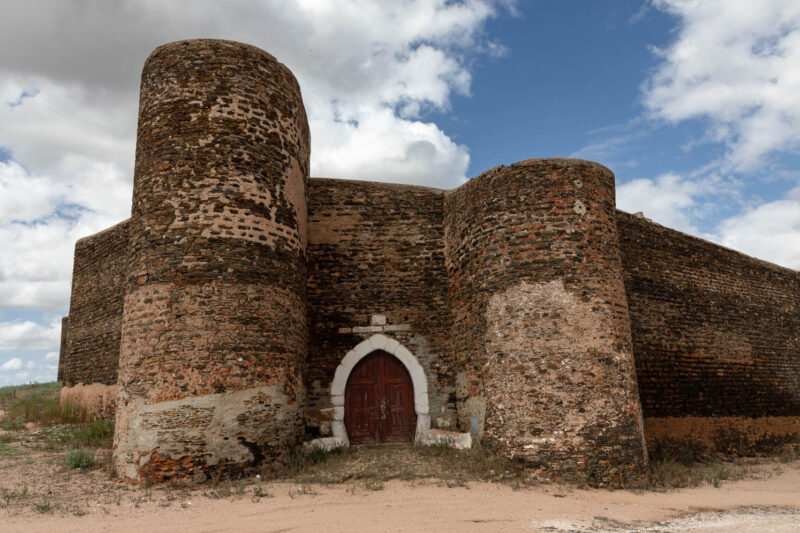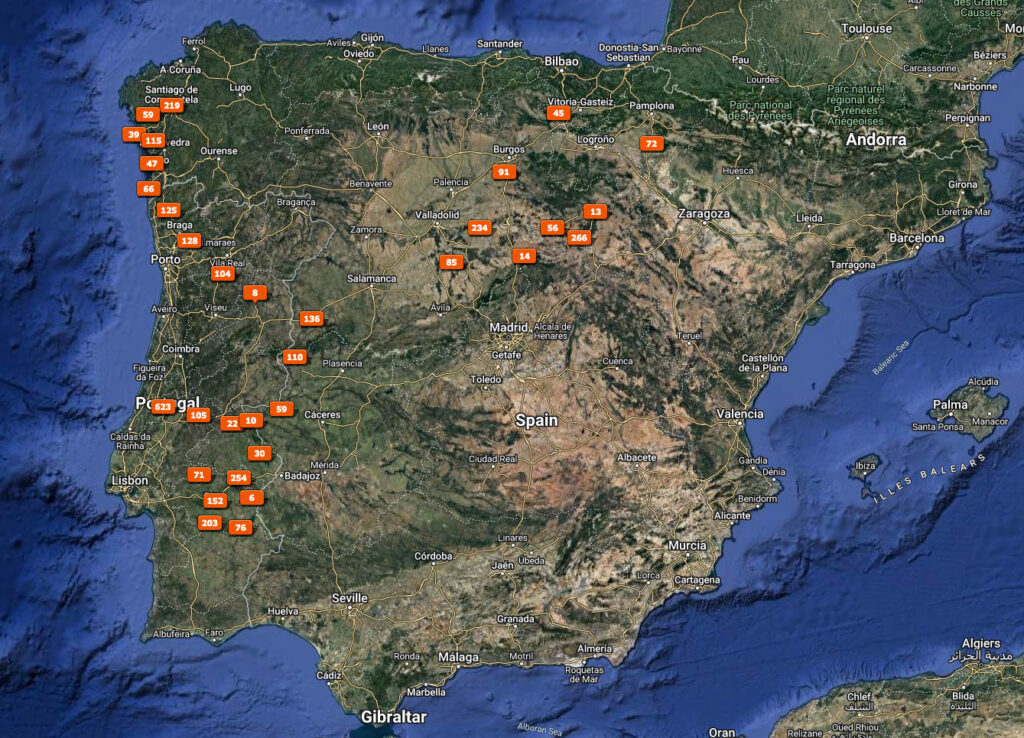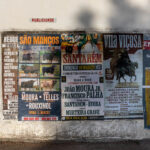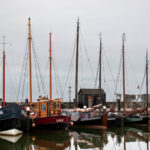Travelogue Spain and Portugal 2023 (2)
travelogue
Spain and Portugal 2023 (2)
Although the plan was to travel to the Lofoten in Norway this summer, we had to change our plans and instead we travelled to the south of Europe. We first spent a few days in Normandy in France and then we went south to Spain and Portugal. Our visits to Santiago de Compostela in Spain and Lamego and Fátima in Portugal made us feel like pilgrims on our own pilgrimage.
We drove about 7.350 km during this trip
Photo series
The photos of Normandy are on SmugMug in the series Hauts-de France et Normandie (click). We have recently uploaded the photo’s of Spain and Portugal and these photo’s are incorporated in the Regional series in our Spain folder (click) and Portugal folder (click). Here below a small selection of our photo’s, meant as a teaser.
Route
- Zeeland (NL) -Wissant (FR)
- Wissant (FR) – Incheville (FR)
- Incheville (FR) – Quiberville (FR)
- Quiberville (FR) – Villiers-en-Bois (FR)
- Villiers-en-Bois (FR) -Olite (ES)
- Olite (ES) -Soria (ES)
- Soria (ES) – El Burgo de Osma – Soria (ES)
- Soria (ES) – Berlanga de Duero (ES) – Caltojar (ES) – Rello (ES) – El Burgo de Osma (ES)
- El Burgo de Osma (ES) -Ayllón (ES) – Ríaza (ES) – Segovia (ES) – Vegàs de Matute (ES)
- Vegàs de Matute (ES) – Villangómez (ES) – Rodilla (ES)
- Rodilla (ES) – Santiago de Compostela (ES)
- Santiago de Compostela (ES) – Noia (ES) – Corrubedo (ES) – Boiro (ES)
- Boiro (ES) Canbados (ES) – Praia de Lanzada (ES)
- Praia de Lanzada (ES) – Hio (ES) – Baiona (ES) – Oia (ES) – Playa de Alamina (ES)
- Playa de Alamina (ES) – A Guarda (ES) – Ponte de Lima (PT)
- Ponte de Lima (PT) – Guimarães (PT)
- Guimarães (PT) – Lamego (PT)
- Lamego (PT) – Trancoso (PT) – Parques Natural de Sierra Estrela (PT) – Barril de Alva (PT)
- Barril de Alva (PT) – Fátima (PT)
- Fátima (PT) – Tomar (PT) –
- Tomar (PT) – Abrantes (PT)
- Abrantes (PT) – Sardoal (PT) – Brotas (PT) – Évora (PT)
- Évora (PT) – Arraiolos (PT) – São Brissos (PT) – Viana do Alentejo (PT)
- Viana do Alentejo (PT) – Portel (PT) – Amieira (PT)
- Amieira (PT) – Reguengis de Monsaraz (PT) – Terena (PT) – Estremoz (PT)
- Estremoz (PT) – Sousel (PT) – Veiros (PT) – Arronches (PT)
- Arronches (PT) – Alpalhão (PT) – Póvoa e Meadas (PT) – Alcántara (ES)
- Alcántara (ES) – Trevejo (ES) – Torre de Don Miguel (ES)
- Torre de Don Miguel (ES) – Ciudad Rodrigo (ES) – La Alberca (ES)
- La Alberca (ES) – Coca (ES) – Peñafiel (ES)
- Peñafiel (ES) – Añana (ES)
- Añana (ES) – Ainhoa (FR) – Pissos (FR)
- Pissos (FR) – Ballon-Saint-Mars (FR)
- Ballon-Saint-Mars (FR) – Zeeland (NL)
Map of Spain and Portugal with photo locations
Highlights of our trip
France
The Opal Coast
The Opal Coast is the name of the coast at the impressive Strait of Calais, the narrowest part of the English Channel, the sea connection between the mainland of Europe and Great Britain. Its width is 33 km. This coast is breath taking. The weather was clear, and it was special to see the chalk cliffs of Dover in England from the French coast.
Near Escalle we took a walk on and around Cap Blanc-Nez. Then we drove to Cap Gris – Nez and walked around the lighthouse
Mers-Les-Bains en Le Treport
Mers-Les-Bains is a beautiful seaside resort. Along the boulevard, the Esplenada du Général Le Clerc, are the most beautiful Belle-Époque houses. It is all very colourful and the contrasting white bathhouses on the beach and the white cliffs on both sides of the beach give it a special atmosphere.
In Le Tréport on the other side of Mers-Les-Bains we took a walk on the cliffs and then we took the cogwheel railway down to the beach. We strolled along the beach. The light was beautiful. The high rocks in the background and in front of it the colourful bathing cabins create a nice scenery for photographers
This coast, the Côte d’Albâtre, is very beautiful.
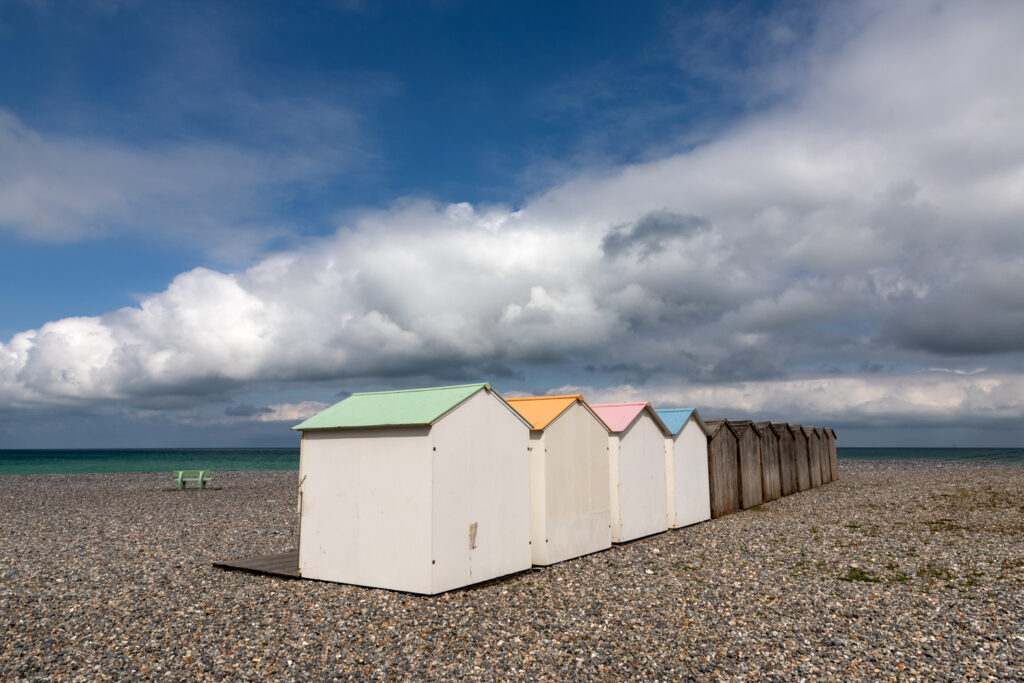
Spain
Olite
From the 13th century, Olite was a residence of the kings of Navarre. Charles III the Good ordered the construction of the “fairy-tale” castle of Olive. The castle is as big as a medieval town and has that allure. The castle and the two churches give Olite an imposing appearance
Not far from Olite is Ujué. A medieval village, perched at the top, above the country of Ribera. Nice to stroll through the streets.
El Burgo de Osma
El Burgo de Osma is a lovely little town. The town is dominated by the immense cathedral. Maybe a bit too big for this small town. In the 18th century, architects built colonnades and erected buildings with a Baroque appearance, giving the town a special atmosphere.
Berlanga de Duero
In Berlanga de Duero there is a beautiful 15th century castle, a former defensive structure along the Duero. It is an impressive structure.
Ermita de San Baudelio
From the outside, the Ermita de San Baudelio is not special, however from the inside it is a small miracle. It is a Mozarabic chapel. It has many Moorish elements and remnants of murals. Unfortunately, most of the frescoes have disappeared. An American art dealer bought them in 1920 and traded them afterwards. Part of it has been returned to the Spanish government, which, however, cannot be seen here, but in the Prado in Madrid.
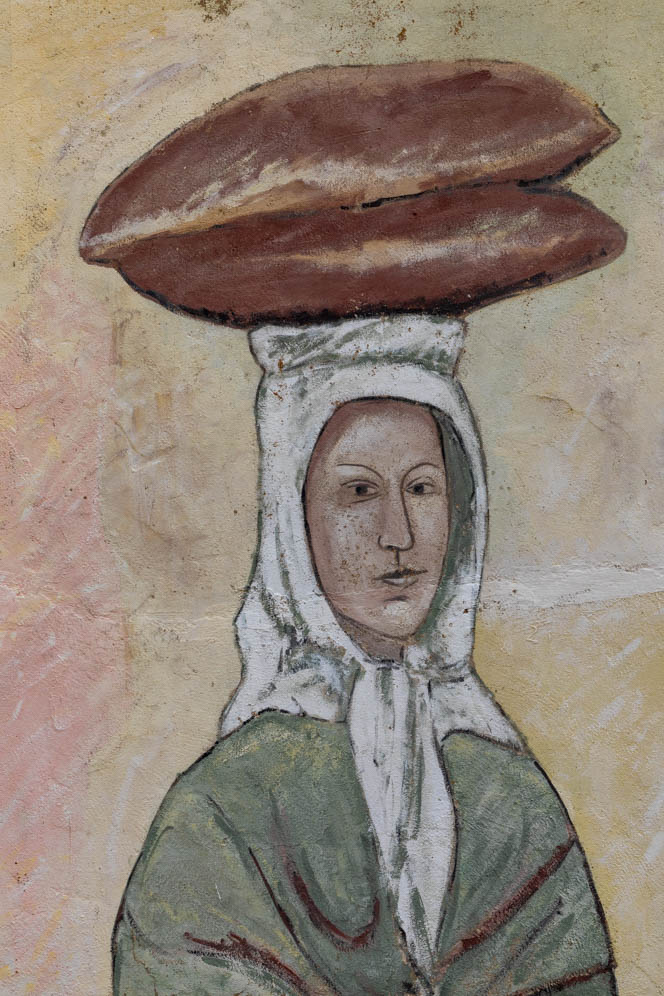
Caltojar
Picasso on every corner of Caltojar.
In 1981, the city of Caltojar decided to pay tribute to Picasso on the centenary of his birth. The joint initiative of the mayor Ángel Molina, the town clerk Ángel Nuño, teacher Julián Andrés and the children of the city consisted of painting about 60 murals with works by the artist throughout the city. Years later, in 2014, they were restored by decree of Mayor José Luis Ortega so that they could be preserved to this day.
The children were the protagonists, but the whole town was involved, for almost two years. “When we had some free time, we would come and paint and spend time together”. The mayor explains that at night they used a projector to draw the pictures in pencil on the walls and during the day they went to paint them on the walls of the houses next to the town square, where the spectacular Romanesque church of San Miguel is located, and on the access road.
We passed through Caltojar on our way to Rello. A total surprise. The murals are truly beautiful. We took a lot of pictures. We found out later that we haven’t seen everything yet and therefore we have to go back again to Caltojar, which is definitely not a punishment.
Rello
Rello is a well-preserved medieval village. The village is completely walled and not yet affected by tourism. The wall is said to date back to the 12th century, at a time marked by continuous Christian and Muslim invasions.
Riazza
Riaza is a charming village. The Plaza Mayor is quite beautiful. In September, the Plaza Mayor is transformed into the Plaza de Tores. Workers were busy with the last works when we were there. Very special to see how the central village square is transformed into a real bullfighting arena. What kind of emotions do people get when the fights are held? The atmosphere will be special. Are children allowed to watch these crualties ?
Villangómez
Close to Burgos is a village with the beautiful name Villangómez. We learned from internet that there were many murals in this village. We strolled around the village and indeed there were many and some very unique murals.
Santiago de Compostela
Because of the stories about the Camino and documentaries that we have seen on tv, we wanted to visit Santiago. We also wanted to experience the hectic arrival of the pilgrims.
We spent a whole day strolling through this beautiful city. There is a beautiful atmosphere and colour because of the pilgrims, but also because of the many students who live and study here.
Santiago is the second most important pilgrimage site in the world after Jerusalem and Rome. The old neighbourhood with arcades along the streets is a maze of stone.
It is a joy to watch the pilgrims. Everyone has their own story. With the knowledge of now and how I live my life now, I would have loved to have walked the Camino with good friends.
Santiago has stolen our hearts and we definitely want to go back again.

Noia
We had seen photos of a church in Noia, the Igrexa de Santa Maria a Nova and therefore wanted to visit this town and in particular the church. The church houses a museum with a large collection of tombstones, on which there are symbols that refer to the profession of the deceased.
Noia is also the start of a route that we would follow, along the Rías Bajas.
Corrubedo
The rocky coast near the Corrubedo lighthouse is spectacular. Especially in bad weather conditions when the water is pounding on the rocks.
Cambados
In Cambados there is a special 12th century parish church, the Iglesia de Santa Mariña de Dozo. A beautiful romantic ruin, surrounded by the graves of the cemetery.
Cambados is a nice place. The Praza de Fefiñans, surrounded by beautiful buildings, such as the Pazo de Fefiñans and the Iglesia de San Benito, are worth seeing.
Hio
Rik Zaal wrote that one of the most beautiful cruceros in Spain can be found here. And that’s true. He describes it as “a comic strip in granite”. Jesus is taken down from the cross with a ladder. There are ladders against the cross. The two Marys are weeping under the cross.
A Guarda
A Guarda is one of the oldest fishing villages in Galicia. It borders Portugal. A colourful town. We walked along the long boulevard. Well worth it.
Portugal
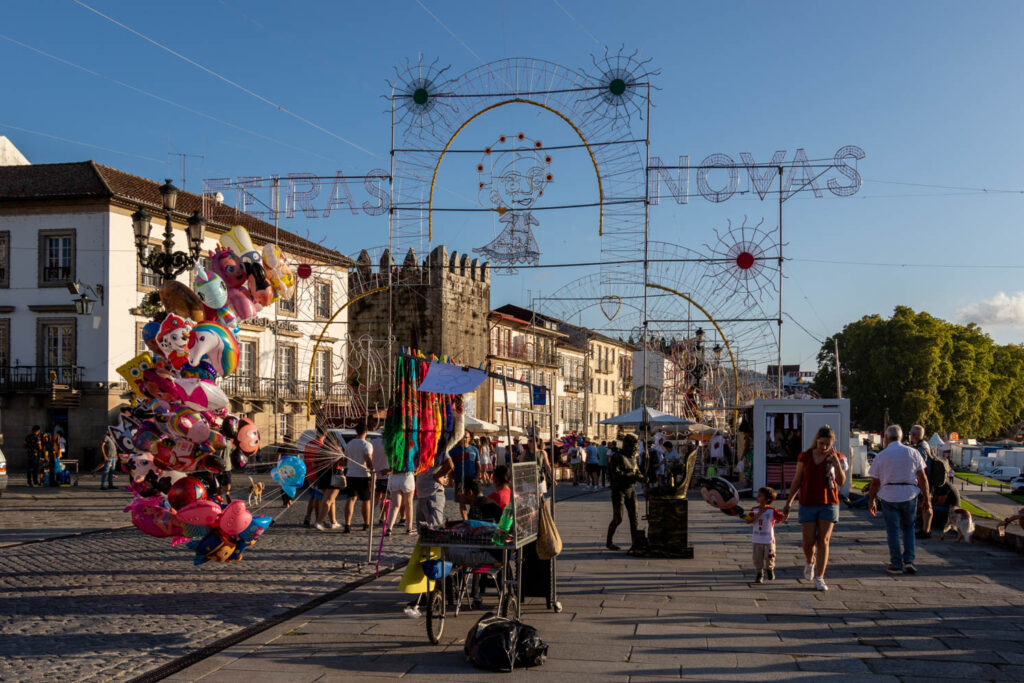
Ponte de Lima
We walked across the beautiful medieval bridge to the old town of Ponte de Lima. We were surprised by a big festival going on along the river. Lots of stalls where all kinds of stuff were offered and food and drinks. And there was a big funfair. The funfair and stalls were mainly ran by Roma. The festivals in this part of Europe are accompanied by a lot of noise, until late at night. Every night there was music until about 06:00.
It was a lot of fun to walk around the festival grounds, but unfortunately it turned out to be a very restless night. Very loud music with terribly loud monotonous bass thumps. Interspersed with the screams of a DJ, who thought himself great. In the morning, gun salutes were fired for half an hour. Our dogs were panicking with fear.
The town is worth a visit, even if there is a festival going on. But then try to find a place for the night outside Ponte de Lima.
Guimarães
Guimarães was the first capital of Portugal and is one of the most attractive cities in the north of Portugal.
It is a beautiful atmospheric city, with special architecture, nice squares, and streets. Particularly impressive are the palace Paço dos Duques de Bragança and the beautiful Castelo.
Maybe it lacks a river that meanders through the city.
Lamego
Lamego is a place of pilgrimage. The church where we spent the night nearby is the center of it: the Nossa Senhora dos Remédios. Mary is passionately worshipped here, especially between 6 and 9 September (we were there 9 September).
We descended the 686 steps and climbed back up again. The real pilgrims get down on their knees. In the city there were still festivities with a lot of stalls where mainly food was sold. The pilgrimage church of Lamego with its stairs resembles the Bom Jesus of Braga. The platforms with azulejos panels are very special in Lamego.
Fátima
After a trip and an overnight stay in Parque Naural de Sierra Estrela, we reached Fátima.
In this desolate place, Mary is said to have appeared to three children in 1917 on the 13th of each month from May to October. Since then, Fátima has become the most important Catholic complex in Portugal and one of the most famous pilgrimage sites in the world. Especially on the dates of the appearances, thousands of worshippers come to Fátima. There is a torchlight procession, a vigil, a solemn mass, and a farewell procession in honour of Mary.
We walked around the square for a few hours during the day and in the evening, we went back around sunset.
We have seen many people praying along the square to the Capela das Aperiçôes on their knees. The fact that people profess their faith in this way made a big impression to us.
Although I am not religious, I have lit a few candles for people who are dear to me.
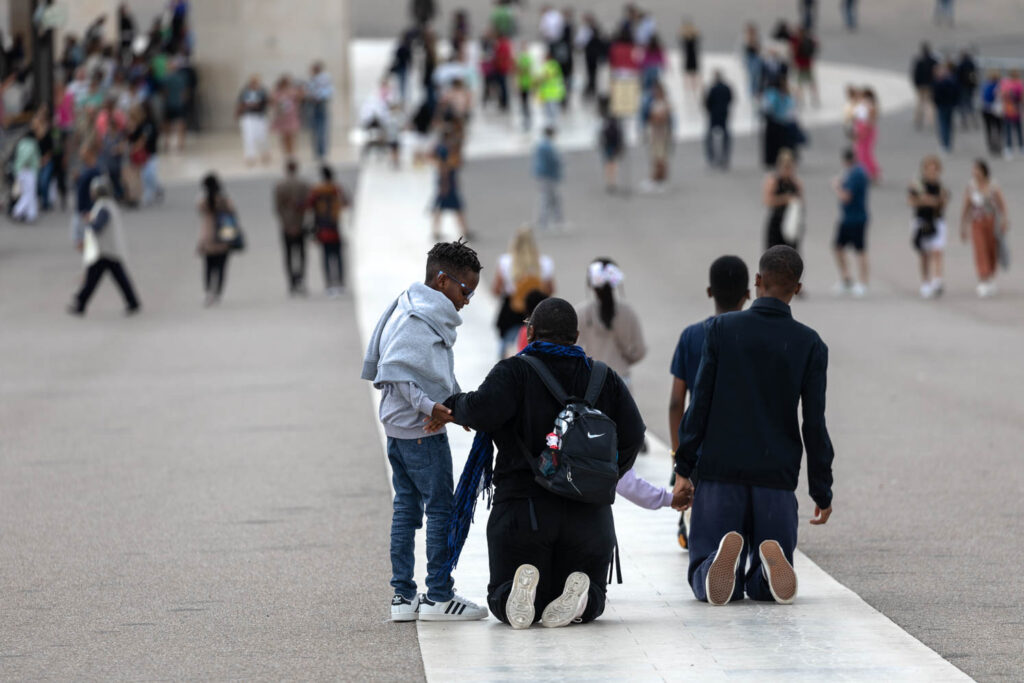
Tomar
Tomar is an attractive city because of its atmospheric historic centre with a maze of medieval streets with low houses and its dignified Praça de Repùblica. But the biggest attraction is the Convento de Cristo. The Convento was founded in 1160 by the religious knighthood of the Knights Templar Convent de Cristo.
The Convento is also on the UNESCO World Heritage List. Since we arrived late , regretfully, we have not given the Convento the time it deserves.
We also visited the synagogue in Tomar, which was built between 1430 and 1460 and which is the oldest synagogue in Portugal.
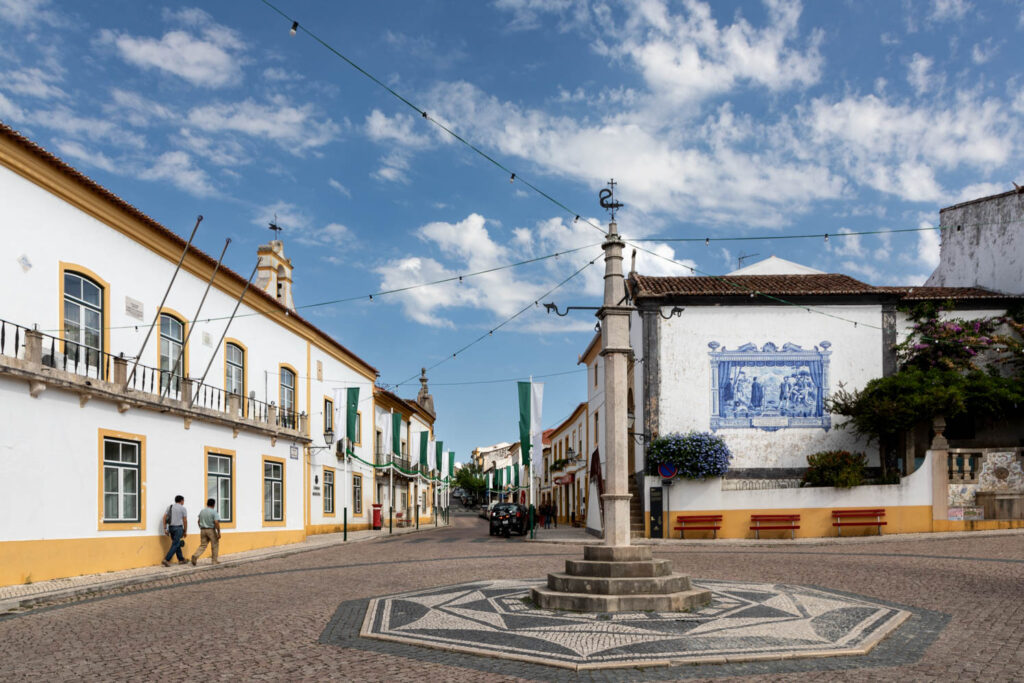
Sardoal
Sardoal is a picturesque, sweet village along the N2. Architecture, use of colour and the atmosphere I found really Portuguese. The town has white houses that are located on top of a hill. The streets of the oldest part of Sardoal are made of river stones.
Brotas
The road through the village is too narrow for two-way traffic. Although it is a small village, it is worth visiting. A sweet, charming, small, typical Portuguese village.
Arraiolos
Arraiolos is known for its carpets. Wool processing was introduced by Muslims and dates back to the 13th century. It is a beautiful village with white-blue limed houses on two hills.
Above the village are the ruins of a castle from the 14th century. The wall around the village has been completely restored. The view over the village, the olive groves and the reservoir is magnificent..
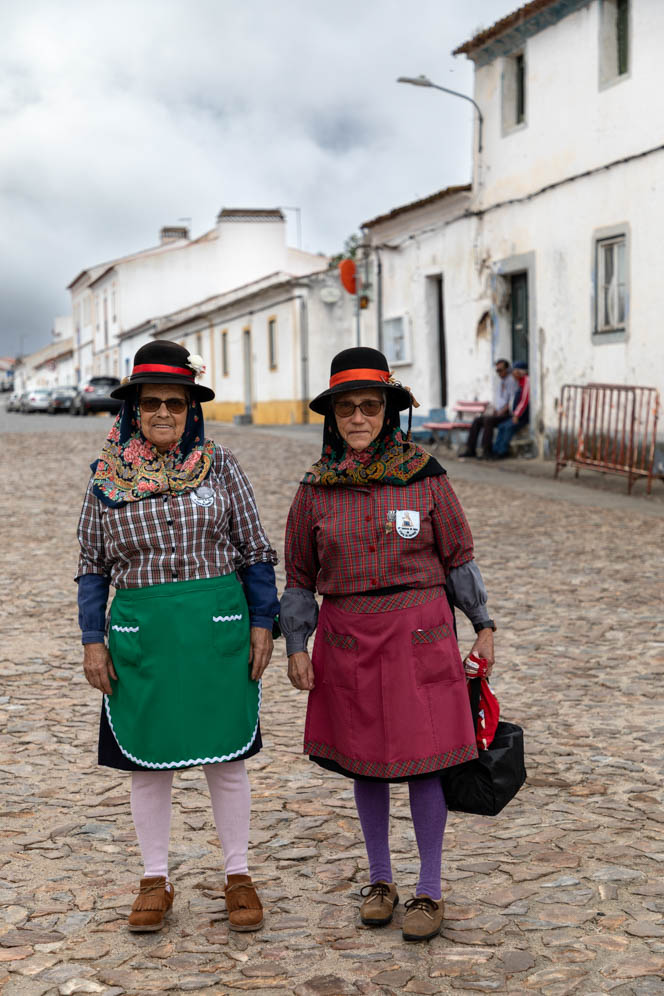
Viana do Alentejo
Too bad it was raining cats and dogs, but apart from the rain we found Viana a very nice place. Nice streets and an intimate square. The eye-catcher is the castle Castelo de Viana de Alentejo, with the Igreja Matiz inside. The architecture of the castle is beautiful, but I also liked the use of colour, especially the yellow colour that was used.
Outside Viana is the large Santuàrio Nossa Senhora d’Aires. The building itself is Disney-like. The statue of the Virgin Mary in the church, which is worshipped, helps anyone who asks for her help. Behind the altar are thousands of photographs, as well as objects and even hairpieces, that were left behind by people who were helped by Mary. A unique collection.
Terena
We have been to Terena several times on our previous trips through Portugal. We had a special mission this time.
But first we visited a medieval chapel, just outside Terena, the Santuario de Nossa Senhora da Boa Nova. The previous times the chapel was closed, but this time we had better luck. The chapel was built in 1340 and has a beautifully painted Gothic interior.
During our previous visit we had taken photos of a sweet old woman. I made prints of the photos at home and took them with me in case we would pass by Terena. Unfortunately, the house where she lived was no longer inhabited. We found out that she lived in a neighbourhood outside the old village. In a nursing home. To enter the home there was an unfriendly gate, which had to be opened by the staff. The rooms were small. But we found Doña Teresa, that was my old friend’s name. She came to me through a narrow corridor with the help of a walker. She recognized me. She was emotional when I showed her the pictures and gave them to her. She wanted a kiss…. I gave her three. Seeing her again and holding her for a moment in my arms moved me.
Estremoz
Located in a region full of marble quarries, Estremoz is an attractive town, surrounded by a city wall and guarded by the keep of a medieval castle. We went for walks in the late afternoon and the next morning. We spent the night at the Rossio Maquès de Pombal.
Estremoz is a wonderful city to stroll through.
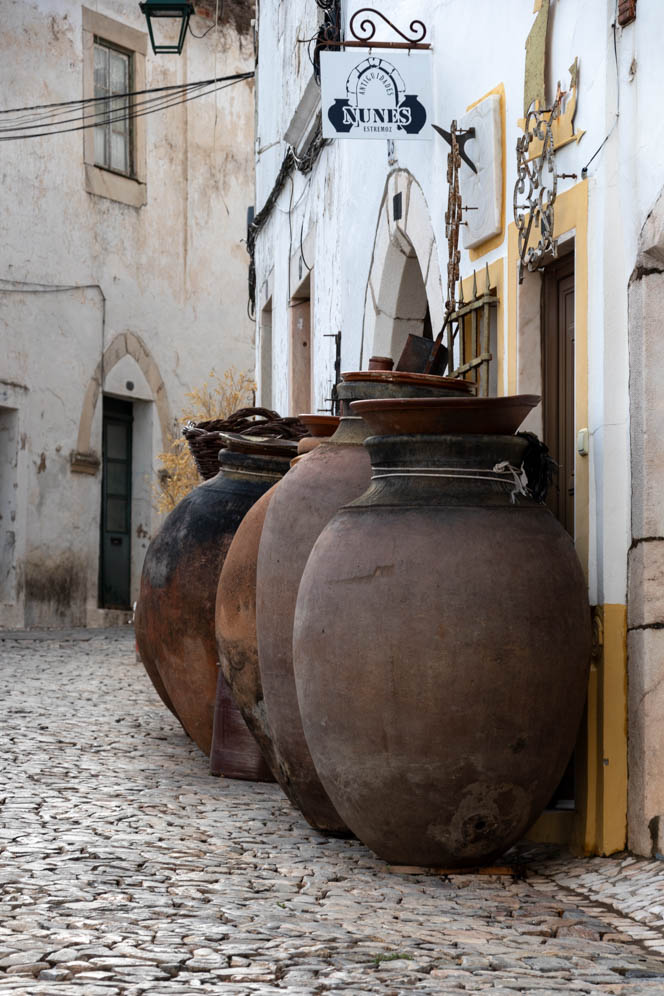
Sousel
We had seen a photo on internet of an arena and next to it a church in an open landscape. It was difficult to find, even with our GPS. Finally we found a narrow road that took us to the top of a hill, where the arena and the church stood and also an old pousada.
A weird place, in the middle of nowhere.
Veiros
In Veiros there is an impressive castle, built of granite with imposing round towers. The castle dominates this small white village.
Póvoa e Meadas
In Póvoa e Meadas we also had a mission, similar to the one in Terena. In 2010 we drove through this village and at a church along the road there were three elderly people, enjoying the late evening sun. I asked if I could take some photos and they agreed without hesitation.
I had also made prints of these photos at home, and we started searching for the people. We found the church and from a woman who lived near the church and spoke some English and who also set out some helplines we learned more about the elderly people on the photo.
The two men had died in the meantime, the woman in the photo, who was married to one of the men in the photo was still alive. We gave the photos to a daughter of one of the men and to a niece of the couple in the photo. It was a good feeling to make these people happy with the photos of their loved ones.
Spain
Trevejo
A very small village in the Sierra de Gata. The ruins of a medieval castle make the village a nice photogenic stop.
Ciudad Rodrigo
Ciudad Rodrigo is not really a big city, but it has a certain grandeur. The city is completely walled. Within the walls is a beautiful Plaza Mayor, beautiful palacios, an alcazar, an old town hall, several churches, a cathedral, and the most beautiful post office in Spain.
A pity that certain places in the city were not made car-free.
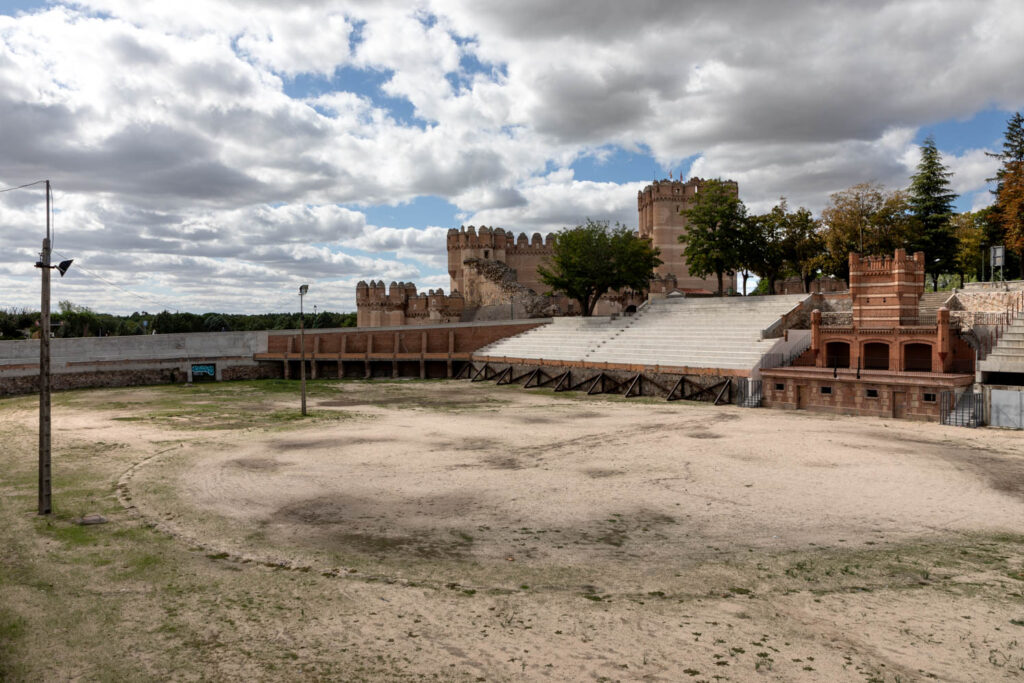
Castillo de Coca
The Michelin Green Guide writes:
On the edge of a moorland landscape, the castle of Coca stands as an extraordinary proof of military architecture in the Gothic Mudejar style. The dimensions are nothing short of mind-boggling. It was built at the end of the 15th century by Moorish craftsmen and has a double wall with round side turrets. The complex is surrounded by a deep, 560-metre-long moat.
To be fair, the castle is colossal and beautiful.
Peñafiel
At the foot of the Castillo de Peñafiel we found a great camper spot with a view of the castle. Because of its location, I found this castle even more imposing than the Castillo de Coca.
On a sunny Saturday morning we strolled through Peñafiel. A nice city. Some towns and cities will make you fall in love a bit. This was also the case on Peñafiel.
The Plaza del Coso is unique. This is where the so-called Corro de los Toros is held. One of the oldest bullfights in Spain. In the square there are half-timbered houses with two or three floors with wooden shutters. There is no pavement on the ground, but rammed earth. Since 1433, the festival of Nuestra Señora y San Rogue has been held here from 14 to 18 August.
Salinas de Gesaltza – Añana
The town is known for its saltworks, which have existed since the 10th century. The salt pans are placed on top of each other on platforms on pillars. From April onwards, the water from the Muera evaporates and pure salt is left behind.
It was a pity that we were here in a very busy weekend and the light was also not in our favour.
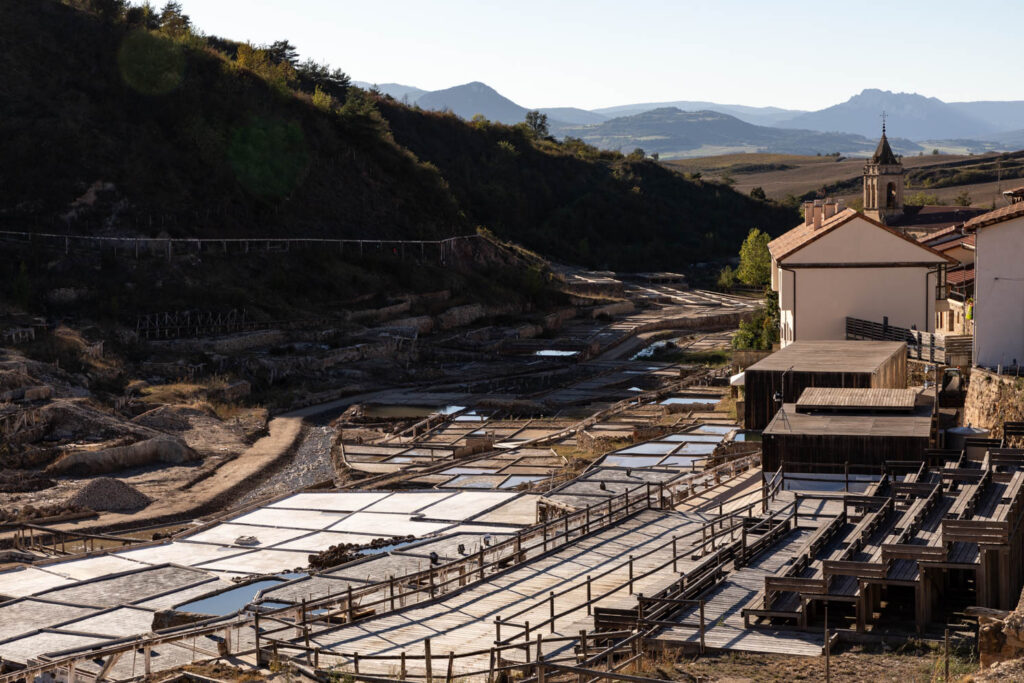
Travel guides
This time we took only travel guides in the Dutch language. The Michelin guides are also printed in English.
- Spanje, een reisgids – Rik Zaal
- De Groene Reisgids Midden-Spanje van Michelin
- De Groene Reisgids Noord- Spanje van Michelin
- De Groene Reisgids Portugal van Michelin
- Extremadura – Pieter Jan van der Linden
- Camperreisgids Noord-Spanje van camperreisgids.nl
- Camperreisgids Zuid-Spanje van camperriesgids.nl
- Camperreisgids Portugal van camperreisgids.nl
Comments are closed.


